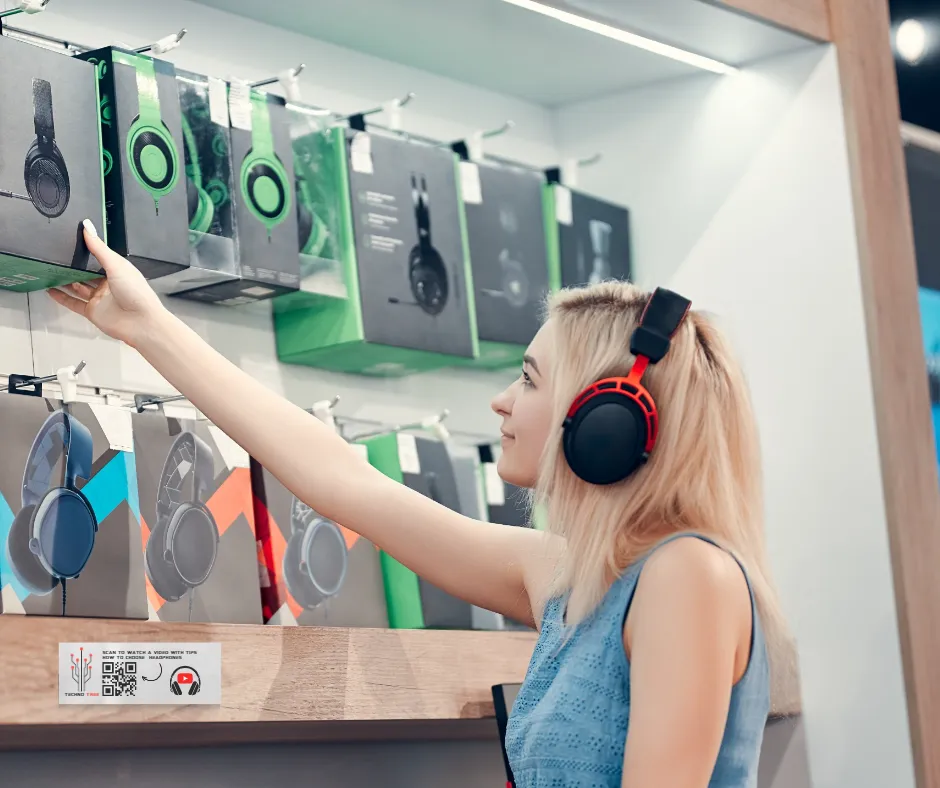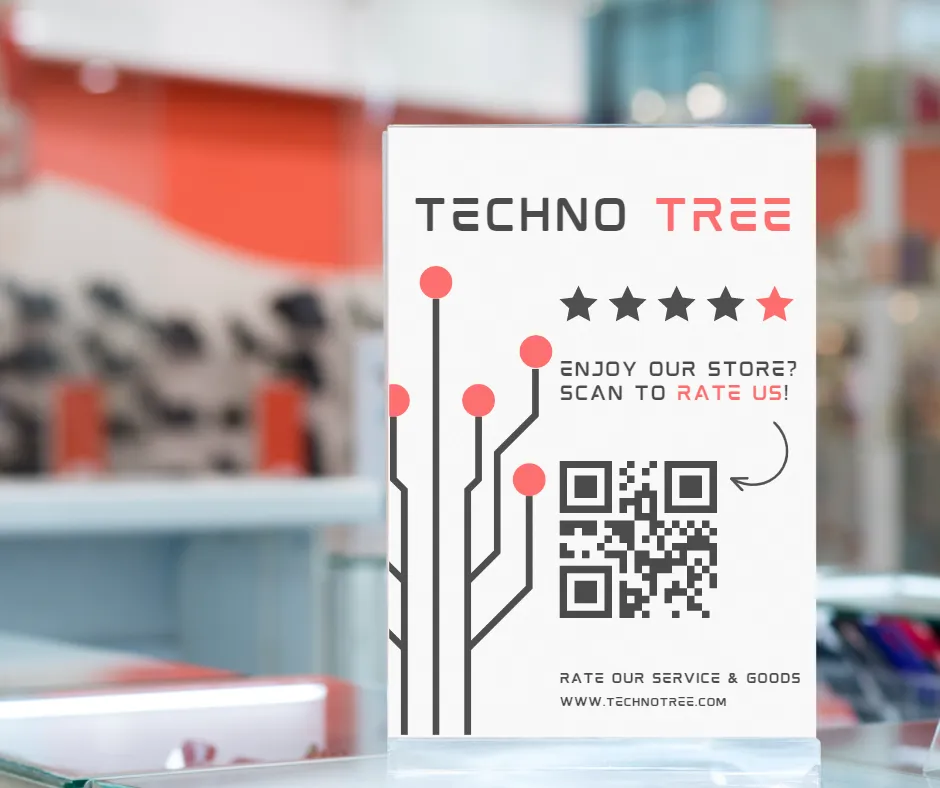

Table of Contents
1.
Benefits of QR Codes in Consumer Electronics
2.
Usecases of QR Codes in Consumer Electronics
3.
How to create your own Codes for Consumer Electronics?
4.
Conclusion
Unlocking the Potential of QR Codes in Consumer Electronics
In today's digital age, quick and efficient access to information is paramount. The consumer electronics industry has been quick to adopt QR codes as a powerful tool to enhance user experiences and streamline processes. These small, square codes are everywhere, from product labels to user manuals, revolutionizing how consumers interact with their electronic devices. In this article, we'll explore the various ways QR codes are being utilized in the world of consumer electronics.
Benefits of QR Codes in Consumer Electronics
Enhanced User Experience
QR codes enhance the user experience by simplifying the onboarding process. Instead of struggling with complex user manuals or paperwork, users can scan a QR code to access digital guides, tutorials, and FAQs, making it easier to understand and use their devices effectively.
Quick Access to Support
QR codes placed on products or in user manuals can link users to customer support resources. Whether it's troubleshooting guides, chat support, or helpline numbers, QR codes make it simple for consumers to get the assistance they need when facing issues with their devices.
Reduced Environmental Impact
QR codes contribute to a more eco-friendly approach by reducing the need for printed materials like extensive user manuals and product information booklets. This shift to digital resources helps minimize paper waste and the environmental footprint of consumer electronics.
Enhanced Product Packaging
Manufacturers can use QR codes creatively on product packaging to provide interactive and engaging content. For example, they can offer product demos, 360-degree views, or links to complementary accessories, adding value to the overall product experience.
Anti-Counterfeiting Measures
QR codes can serve as anti-counterfeiting tools. Manufacturers can incorporate unique QR codes on their products, which consumers can verify to ensure product authenticity. This helps combat the growing issue of counterfeit electronics in the market.
Cost Savings
The adoption of QR codes can lead to cost savings for manufacturers. By replacing physical user manuals and information booklets with digital alternatives, they can reduce printing and distribution costs while still delivering valuable content to consumers.
Data Collection and Analytics
Manufacturers can gather valuable data through QR code scans, such as user preferences, common issues, and usage patterns. This data can inform product improvements, marketing strategies, and customer support enhancements.
Future-Proofing
As technology continues to evolve, QR codes can adapt and be integrated into new applications and features. They provide a flexible and scalable solution that can evolve with consumer electronics trends and innovations.Usecases of QR Codes in Consumer Electronics
QR Codes for Product Information
QR codes have become the go-to solution for providing detailed product information to consumers. When scanned with a smartphone camera, these codes can instantly link users to websites, landing pages, or online manuals with comprehensive details about a product. This technology allows manufacturers to share information that wouldn't easily fit on a product label, such as specifications, safety guidelines, and warranty details.
For consumers, this means no more squinting at tiny text on labels or hunting for lost paper manuals. A quick scan, and they have access to all the information they need. QR codes simplify the process of getting acquainted with a new device, making the user experience smoother and more enjoyable.
Warranty Registration and Support
Warranty registration is another area where QR codes shine. Instead of filling out tedious forms or navigating complex online portals, consumers can scan a QR code to register their product for warranty. This streamlined process is not only convenient but also reduces the likelihood of registration errors.
Additionally, QR codes can be placed on the product itself, enabling users to quickly access support resources in case of issues. They can be directed to troubleshooting guides, FAQs, or even chat with customer support agents. This instant support can prevent frustration and enhance customer satisfaction.
Enhancing User Manuals with QR Codes
Traditional paper user manuals are often bulky, hard to navigate, and prone to getting lost. QR codes have changed the game by linking users to digital, interactive manuals. These manuals can include videos, animations, and clickable links, making it easier for consumers to understand their devices and troubleshoot problems.
Imagine scanning a QR code on your new camera's manual and watching step-by-step video tutorials on how to use its advanced features. It's a far cry from the days of flipping through pages of dense text and static images.
L2QR
The QR code platform offers effective e-marketing solutions
Create your QR code design that will meet your brand standards with colors

How to create your own Codes for Consumer Electronics?
Embarking on the journey of crafting your own art QR code is an exciting endeavor that doesn't require advanced design skills or a hefty budget. With a few simple steps, you can infuse your creative vision into a QR code that aligns perfectly with your brand. Here's how:1. Sign up on Link-to-QR.com
Go to link-to-qr.com. Our platform offers an intuitive and user-friendly interface for generating QR codes with a personalized touch for free.
2.Select the QR Code Type:Choose the appropriate QR code type based on your intended use for consumer electronics. Options may include:
- URL QR Code: For linking to a specific web page or product information.
- Text QR Code: To encode text data such as contact information.
- Contact Card QR Code: To create a vCard for easy contact saving.
- Wi-Fi QR Code: For sharing Wi-Fi network credentials.
- App Store QR Code: To direct users to download your mobile app.
3.Input Relevant Data:Enter the data you want to encode into the QR code. For consumer electronics, this could be a link to product details, user manuals, warranty information, or support resources.
Customize the QR Code (Optional):
4.CustomizationYou can:
- Adjust the QR code's color to match your branding.
- Embed a logo or icon within the QR code to make it visually appealing.
- Select the QR code's size to ensure it's appropriately sized for your product or packaging.
5.Generate and Download the QR CodeClick the "Generate" or "Create QR Code" button. The tool will process your data and generate the QR code. Download the QR code image in a suitable format, such as PNG or JPEG.

6.Test the QR Code
Before implementing the QR code on your consumer electronics, test it to ensure it functions correctly. Use a QR code scanning app or your smartphone's camera to scan the code and verify that it directs users to the desired content.
7.Implement the QR CodeOnce you're satisfied with the QR code's functionality, incorporate it into your consumer electronics. This can be done by printing it on product labels, packaging, or user manuals. Ensure it's easily accessible to users.
8.Monitor and Update (If Necessary):Keep track of how users interact with your QR code. If the linked content needs updates or changes, you can modify the QR code without altering its appearance. This ensures that users always access current information.
9.Educate Users:Provide clear instructions to users on how to scan the QR code and what to expect when they do. This will encourage engagement and enhance the user experience.
Conclusion
The integration of QR codes into the consumer electronics industry has proven to be a game-changer. From simplifying access to product information and warranty registration to enhancing user manuals, QR codes are making life easier for both consumers and manufacturers.
As technology continues to evolve, we can expect even more innovative uses for QR codes in consumer electronics. Whether it's for augmented reality experiences, personalized product recommendations, or seamless software updates, these tiny codes are set to play a pivotal role in the future of the industry.
In conclusion, as consumers become increasingly tech-savvy and demand more convenience, QR codes are a simple yet effective solution that's here to stay. So, the next time you unbox a new gadget, don't overlook that unassuming QR code – it might just be your gateway to a more informed and enjoyable experience.